In an increasingly hectic world, finding a break to relax and have fun has become an essential need. Instead of resorting to traditional board games, 3D printed desk options emerge as a practical and engaging alternative, offering the opportunity to create unique leisure moments.
The beauty of these models lies not only in the immediate entertainment they provide, but also in the experience of customizing them, making each game something truly personal!
These desk toys and games can be easily printed and assembled at home or in the office. Each one was chosen based on its simplicity of production, small(ish) footprint, and the fun it brings to different age groups and skill levels.
From strategic challenges to moments of pure fun, everyone can enjoy and have fun with games tailored to their environment.
And if your 3D printing setup is on a break, check out Craftcloud for a variety of manufacturers all over the world. They’ll do the heavy lifting for you so that you can get ready to dive into the fun!
Poop Tower
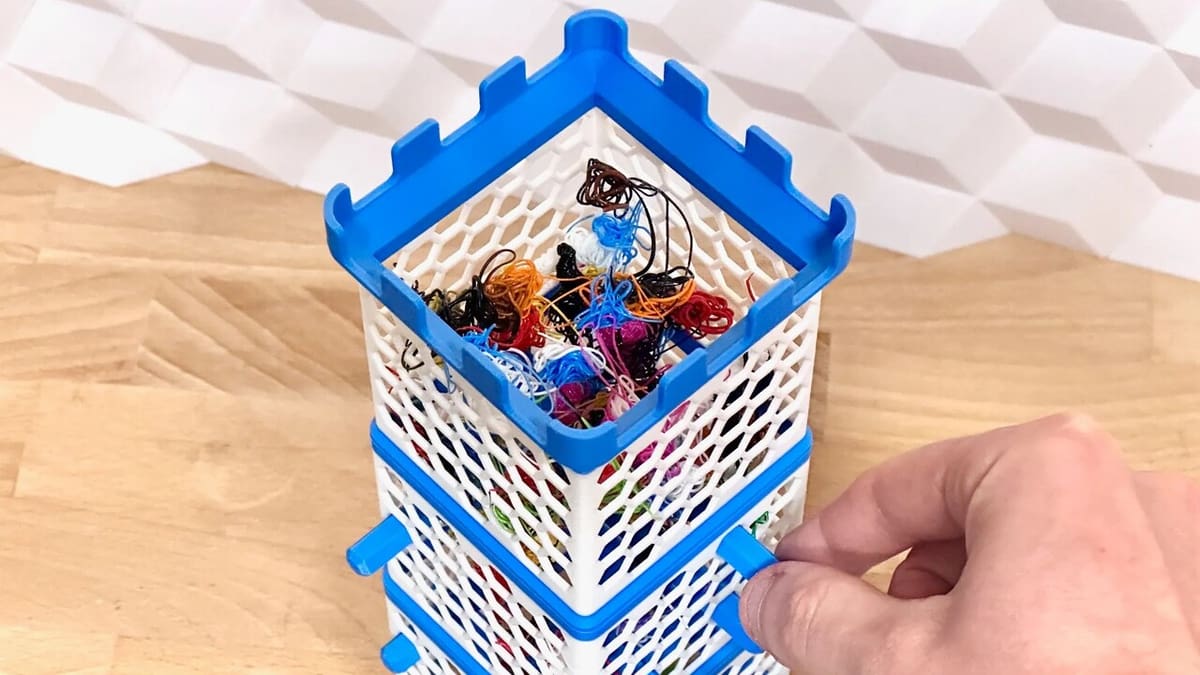
If you own a Bambu Lab 3D printing setup that includes the Automatic Material System (AMS), you may have been wondering what to do with all that poop generated by multicolor prints. The Poop Tower Game is the perfect solution to put the waste to fun use.
This model combines fun and sustainability by transforming the inevitable waste into a challenging game that promises laughter and healthy competition. Inspired by Jenga but with an unusual twist, it challenges players to remove beams from a tower without letting the poop fall. The designer also includes variations on the rules for different setups, while makers have shared their own twists. It’s ideal for those who want involve friends or children in an ingenious pastime that is also a practical lesson in creative reuse.
The model is designed to be printed without the need for supports, and using a brim for the tower sections can help with adhesion to the base during printing. That said, it’s not necessary for the beams. The biggest challenge? Saving enough of your purge material to fill the tower! If you run out, adapting the game with marbles, as suggested by other users, is an equally fun alternative. Depending on the number of beams and tower sections you print at once, printing can take anywhere from 7 to 10.2 hours.
- Who designed it? GlennovitS 3D
- How printable/popular is it? With over 600 prints and 1,300 downloads combined from both sites, this purge escape game is making waves!
- Where to find it? Printables, MakerWorld
Foosball Table
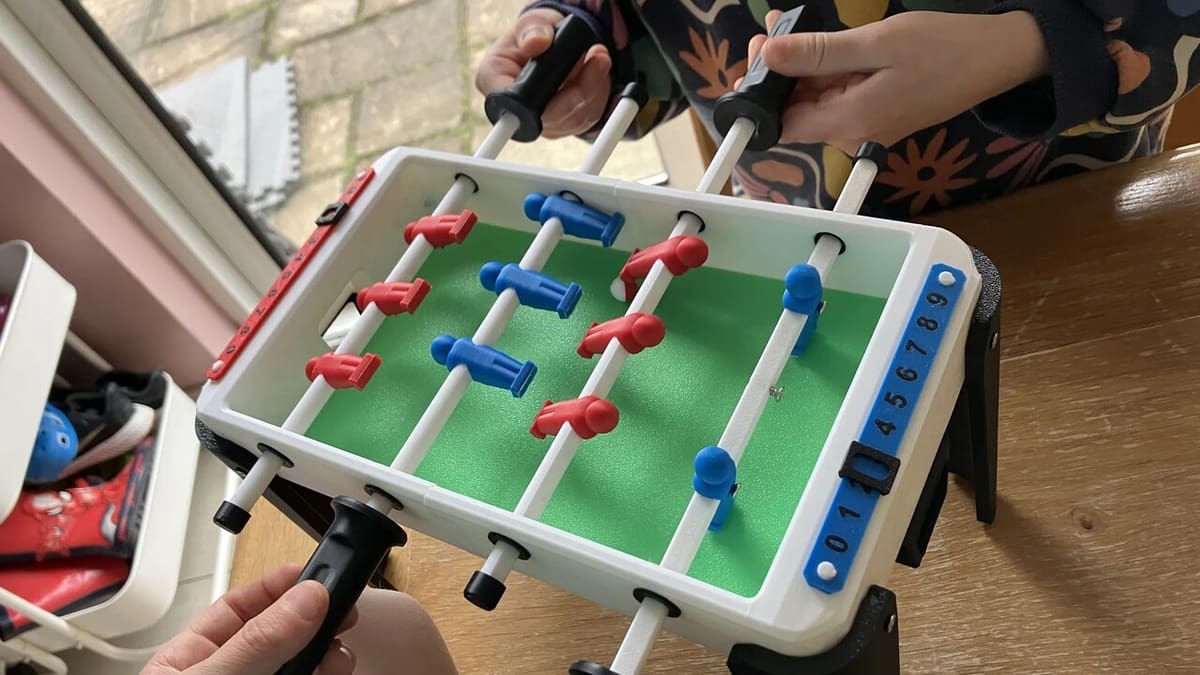
The “Office Mini Desk Foosball Table” is a real miniature game of leisure, perfect for those who want to relieve stress at work or even impress during weekend fun! It’s reasonably small in size but still big enough to be comfortable for adult hands, so no “I’m too old for this” excuses will prevent the fun. And the scoreboard markers will leave no doubt as to who’s the big scorer in the game!
When printing individual pieces, such as the players and the table, it’s important to adjust the printer resolution to avoid imperfections that could compromise the fit of the moving parts. During assembly, a crucial tip is to use small amounts of glue or fasteners to ensure that the pieces don’t come loose easily during play, but doing so without hindering the movement of the players. The printing profile shared by the maker includes a 0.2-mm layer height, 3 walls, and 15% infill.
Most parts can be printed in PLA, but the handles and feet are suggested to be printed in TPU. That said, a few makers mention not having a flexible filament at hand and report that PLA works just fine.
- Who designed it? Sakul
- How printable/popular is it? According to MakerWorld, the design has been printed 3,300 times so far – surely that’s a win for the designer!
- Where to find it? MakerWorld
Balance Tetris
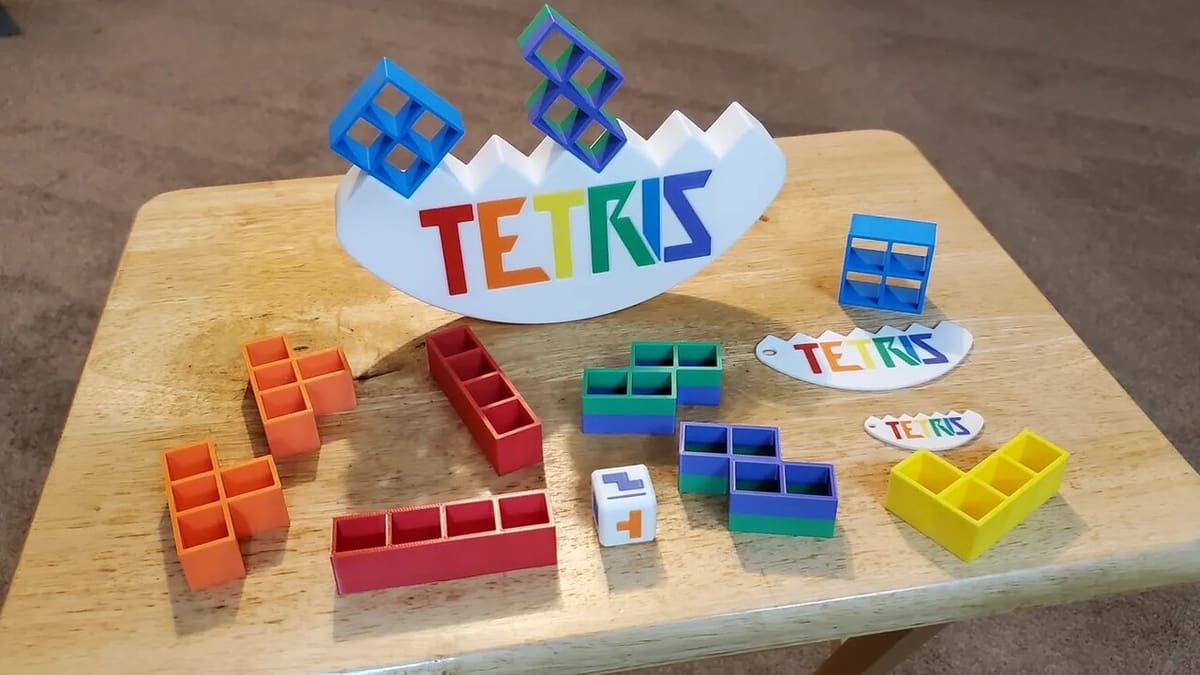
Ideal for Tetris lovers, this version not only maintains the nostalgic essence of a classic, but adds an extra challenge. Balancing the pieces brings a special thrill to those who remember the music and lived through the game’s heyday. It also creates opportunities for younger players to experience a game that has come to life beyond the screen in a fun new concept. Just roll the dice and let the player’s imagination decide where to balance the next piece.
There are 6- and 8-sided dice (D6 and D8) available for both multicolor printers, as well as for single-color setups; for the latter, you can print the colored parts separately. If size is a concern, there’s also a smaller travel version that uses less filament, and if you are looking for something to carry around, you can try the box shared by PeterMain. Maker mtongnz shares that the pieces use approximately 12g of filament, so it can be a great opportunity to use up small leftovers of different colors.
- Who designed it? layer_by_layer
- How printable/popular is it? With 62,000 views, 13,000 downloads, and 5,000 likes, this game is a guaranteed success.
- Where to find it? Printables
Table Bowling
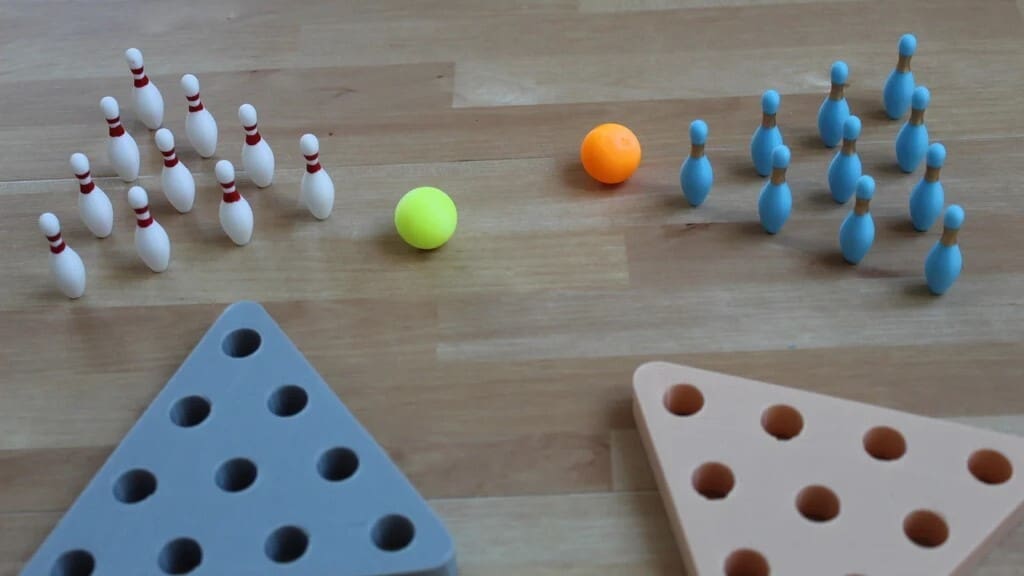
Bowling can be considered both a sport and a game, depending on the context. When played competitively with specific rules and in tournaments, it’s considered a sport, with a set of skills and training. When played recreationally at bowling centers, with friends or family, it’s more commonly seen as a game or leisure activity. Regardless, having a full-size lane at home isn’t common, but having a tabletop version can certainly provide a good deal of fun.
The set has a guide to balance the pins in the perfect position, making it easier to prepare each shot. The balls are simple spheres with a diameter of 21.8 mm. While they should be simple to 3D print, if you have trouble with them, be sure to check out our article on how to do it.
For the balls and pins, the author used a layer height of 0.1 mm and infill of 50%, and for the pinsetter, a layer height of 0.2 mm and infill of 10%. Check out the video of this model in action to see how it behaves during shots – get ready to practice your strike.
- Who designed it? Xenice
- How printable/popular is it? This comfortably-sized version is still gaining momentum, with 3,000 downloads, 1 make, and 1 remix on Thingiverse.
- Where to find it? Thingiverse
Skee Ball
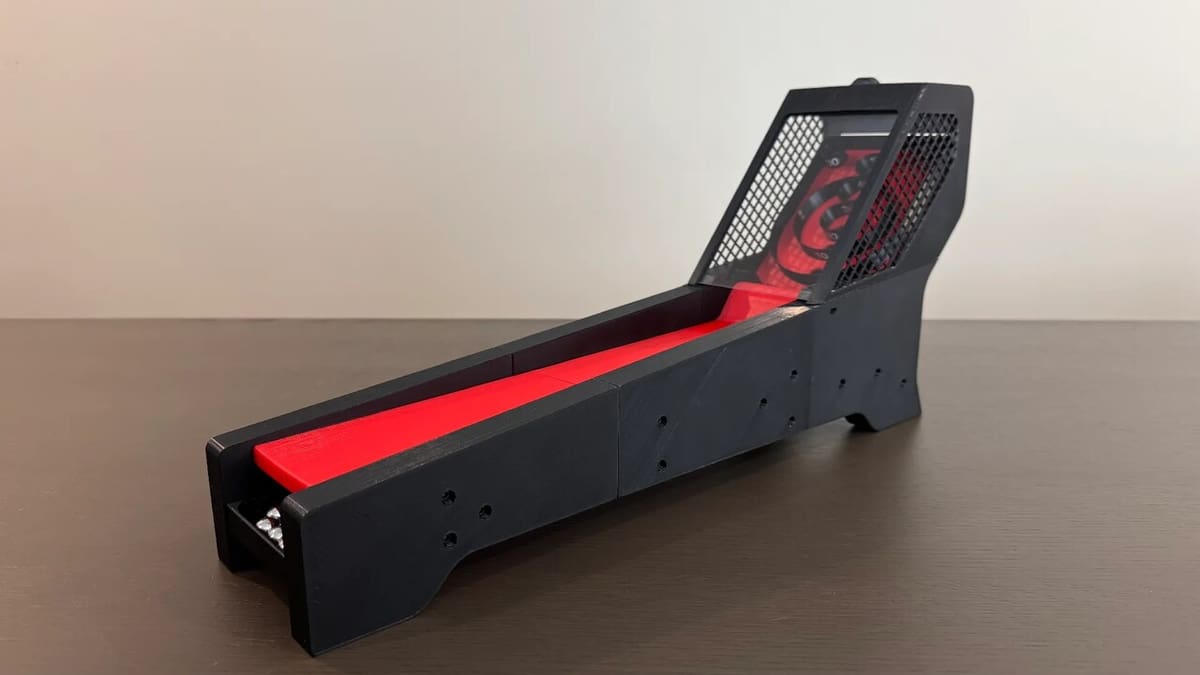
The Desktop Skee Ball is a fantastic way to bring arcade fun into your home in a miniature version full of charm and challenge. This reimagining of the classic game maintains its essence, with a long ramp, automatic gravity ball return, and scoring targets.
3D printing the model is a great opportunity to test your skills, while the simple design and quick assembly make it accessible even for beginners.
Making the Desktop Skee Ball 3D printing is a straightforward journey, especially considering that most of the parts don’t require any additional support. The PDF assembly file that the designer shared includes all the necessary instructions. That said, it’s important to make sure the balls are the right size, as maker lazor226 discovered, to avoid any failures in the mechanism.
- Who designed it? Daniel
- How printable/popular is it? With around 1,250 downloads and 7 makes, it’s easier to miss the target than the print.
- Where to find it? Printables
Mini Billard
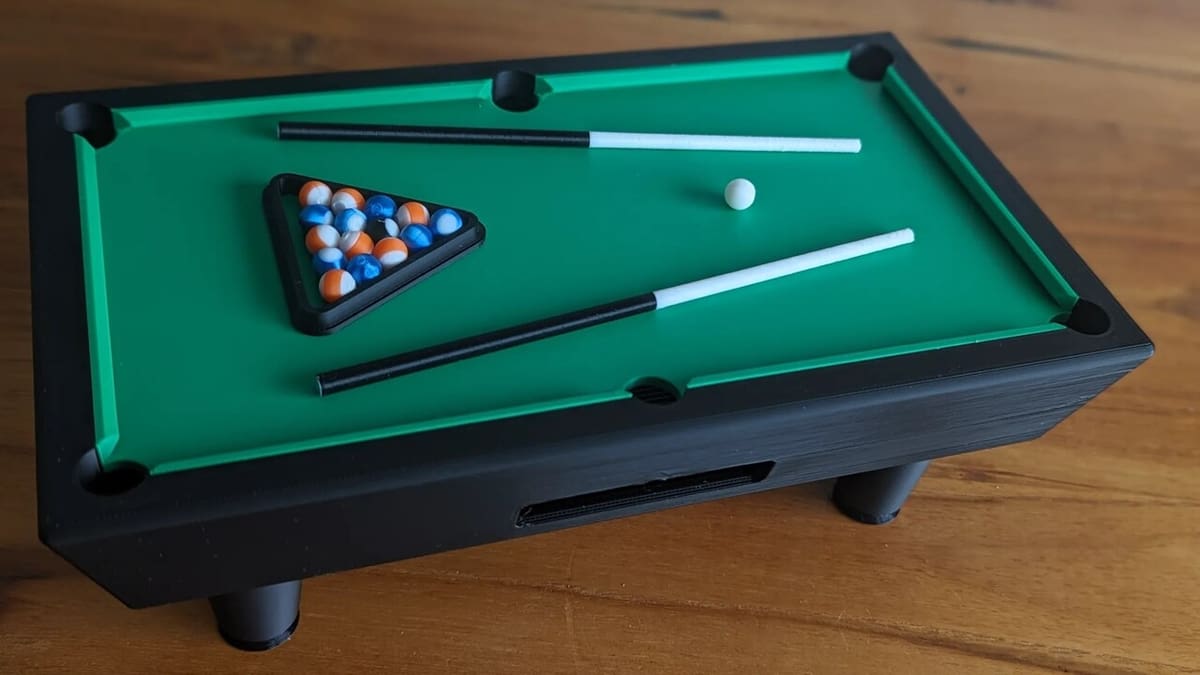
This project isn’t just an amazing miniature, but a true interactive experience that offers a glimpse into the joys of billiards in a compact format. Every detail has been carefully planned to ensure a faithful reproduction of the table, with parts such as the cues and balls printed with high precision.
While players may encounter a slight challenge when handling the balls (which don’t roll perfectly due to their design), the experience of creating and assembling the table is already a good source of entertainment.
The satisfaction of seeing the pieces come to life under the 3D printer is unmatched, and the model’s small size is ideal for those who have limited space but still want to have fun. The designer shared a printing profile with a 0.12-mm layer, 2 walls, and 15% infill. This profile is set up for Bambu Lab’s AMS, allowing you to print the colored balls in one go – although doing this can be a bit difficult due to their compact design. A tip from the designer to get around this is to print the halves separately and glue them together later or to buy balls with an exact diameter of 8 mm.
- Who designed it? DHCDLT
- How printable/popular is it? It’s a great challenge that more than 1,200 people have already downloaded and 1,100 people have printed.
- Where to find it? MakerWorld
Elastic Football
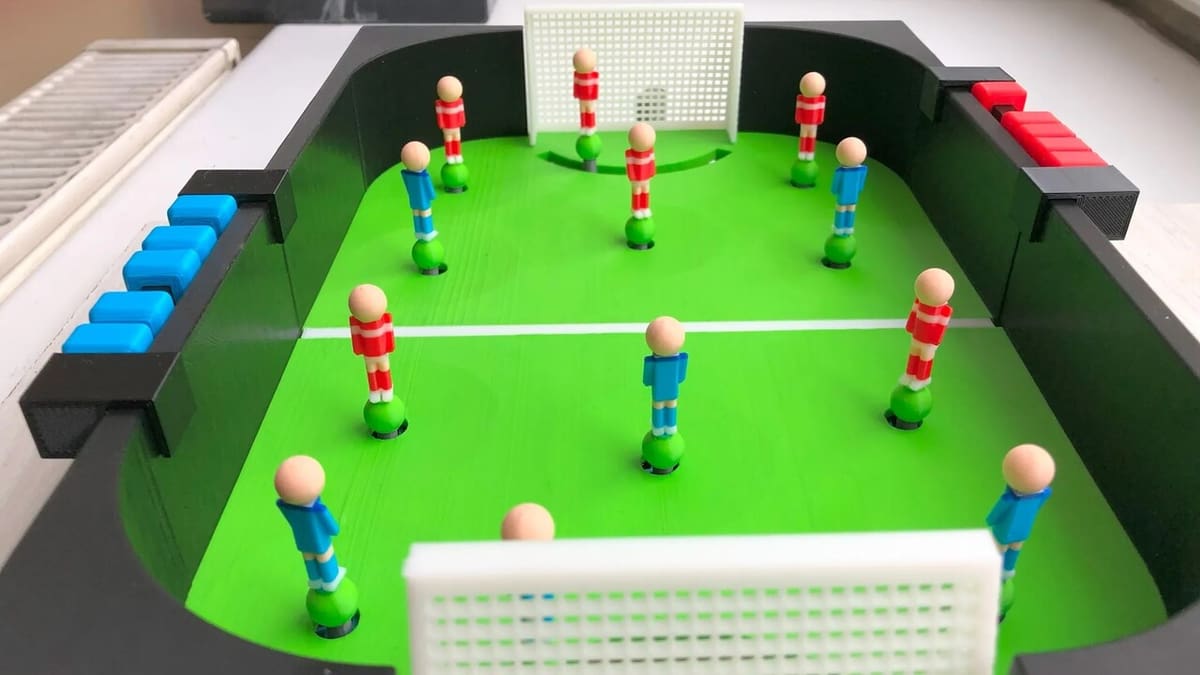
This board game, ideal for two people, brings a fun and engaging dynamic with an elastic mechanism that makes each move a real surprise. The 3D printing of this model is a feast of options, as you can customize your pieces with vibrant colors and even add a personal touch, such as stickers.
Assembling the game and seeing the pieces fit together is something that adds an extra layer of fun. Plus, the movement added by the elastic bands means different results every time you play. Each game will be like a championship final!
The design is straightforward, with parts that can be printed without support using PLA or PETG, and it is recommended that the field be printed in halves, one at a time to avoid quality issues. A maker who has a Prusa Mini mentioned having to split the field into three halves so that it would fit. Some users have reported difficulties with the tolerances of the parts, especially the players, who may need a larger “brim” to ensure grip.
The biggest challenge is installing the elastic mechanism, which can be tricky. The key is in the precision of positioning and the correct tension of the elastics. Luckily, the designer includes thorough guidance on the design’s page, with plenty of images.
- Who designed it? Wilko_SLO
- How printable/popular is it? More than 4,600 downloads and 25 makes make it clear that it’s worth the effort.
- Where to find it? Printables
Air Hockey
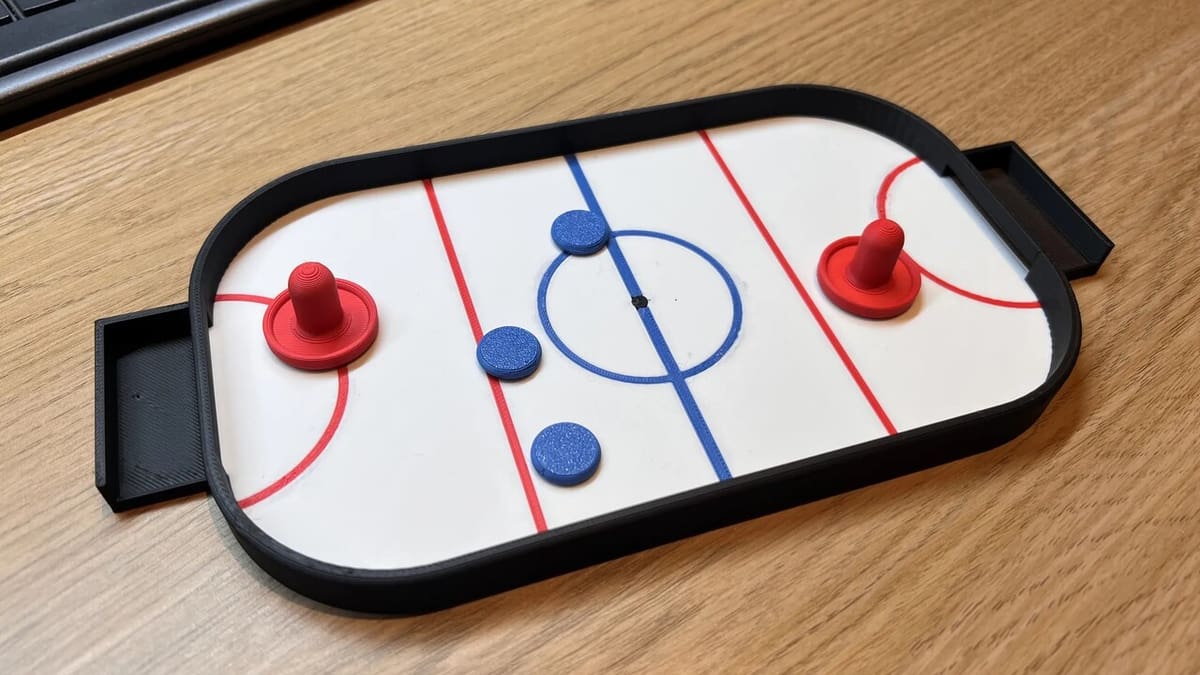
There’s nothing better for competitiveness than a mini air hockey! This compact game not only turns your desk into a battlefield of skill, but also offers the chance to customize and create different versions in different colors – making it even more appealing to those who like to add a personal touch to their projects.
This is a fun and quick solution against boredom that can be done in about an hour and a half. It’s perfect for those who want to transform boring moments into light and dynamic activities, whether in the office or at home.
The designer shared multicolor and single-color profiles, both with a layer height of 0.27 mm, 2 walls, and 5% infill. If you opt for a multicolor design, maker relre indicates that the printing process proceeds without major difficulties with the AMS lite, but may require post-processing. A valuable tip shared by vdubber670 is that a touch of wax can improve performance and increase the fun. Despite the name, there is no active air system in the model; for a more involved design, check out Printmorph3D’s.
- Who designed it? Joe Wilson
- How printable/popular is it? With over 320 prints and around 500 downloads according to MakerWorld, making one of these will be as easy as gliding on ice.
- Where to find it? MakerWorld
Desktop Basketball
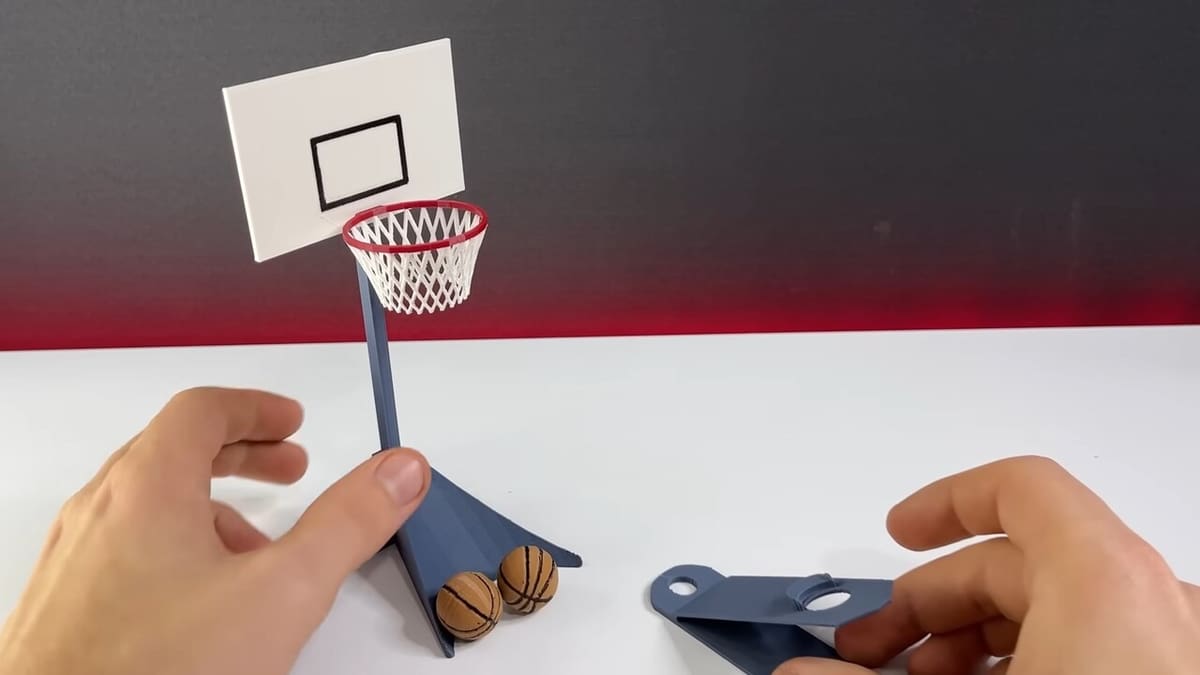
Classic but never out of style, a mini desktop basketball can be the perfect choice to banish boredom. Partly inspired by those typical basketball hoops on trash cans, the game brings the traditional “HORSE” challenge to the office desk.
The model is compact but offers great challenges, including a flipper for more complex and demanding shots. The idea of bringing together a friendly competition in your work environment is one of the great advantages of this model; who wouldn’t like a quick break for a game of table basketball, right?
To bring this mini court to life, simply print the pieces – most of the components require a pressure fit, eliminating the need for glue. If the fit is too tight, a little sandpaper may be the solution, ensuring that the pieces fit together easily. Due to the lack of infill, the net is rather fragile, so care is warranted when setting it up. The model also requires extra attention when catapulting the ball, which can be a little too powerful if not adjusted correctly.
- Who designed it? SometimesCake
- How printable/popular is it? There are 21 makes, 16,000 downloads, and 2 remixes across the different repositories.
- Where to find it? Printables, Cults, Thingiverse
Table Minigolf

Compact and full of charm, this Minigolf brings six challenging courses to your office or living room, allowing the game to be not only a fierce competition, but also an excellent pastime. Without the need for complex supports or advanced printing features, this model adapts well to most 3D printers. The feeling of success when hitting the hole after a series of failed attempts is guaranteed, as well as the fun shared with colleagues or family.
To reproduce the model on your printer, the designer recommends opting for a layer height of 0.2 mm for the tracks and a smaller layer (0.1 mm or 0.15 mm) for the details, such as the flags and putters. The piece is designed without the need for supports, but the base of the steeper tracks may require some finishing to ensure a smooth surface. As for multicolor results, the designer ensured that the model’s color changes are set by layers, so you can have the different hues both by pausing at height or with a multicolor setup.
When assembling, inserting the flags and attaching the mill and hill must be done carefully, as the fitting may require some force.
- Who designed it? Nils Kal
- How printable/popular is it? With 500 downloads and 5 makes, this game is just getting started.
- Where to find it? Printables
License: The text of "3D Printed Desk Toys & Games: Fun for Breaks" by All3DP is licensed under a Creative Commons Attribution 4.0 International License.

